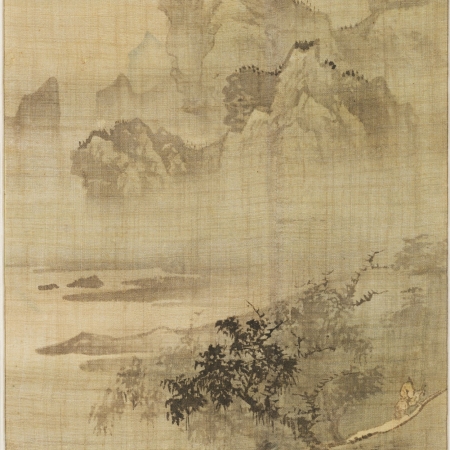GALLERY 2600 | EAST ASIAN ART
 For more than a thousand years the most admired works of art in China and Korea have reflected a deep appreciation of nature. The subjects of East Asian secular paintings are diverse, ranging from landscapes to flora and fauna, figures, and narrative scenes. Among these, landscape paintings have claimed pride of place. The works in this section of the gallery feature Korean landscapes from the Chosŏn dynasty (1392–1910) as well as contemporary Chinese ink paintings that reveal the lasting legacy of the great Chinese landscape tradition.
For more than a thousand years the most admired works of art in China and Korea have reflected a deep appreciation of nature. The subjects of East Asian secular paintings are diverse, ranging from landscapes to flora and fauna, figures, and narrative scenes. Among these, landscape paintings have claimed pride of place. The works in this section of the gallery feature Korean landscapes from the Chosŏn dynasty (1392–1910) as well as contemporary Chinese ink paintings that reveal the lasting legacy of the great Chinese landscape tradition.
The term for landscape paintings in East Asia translates as “mountains and water” (Chinese: shanshui; Korean: sansu; Japanese: sansui), because landscapes always feature these two elements, often in the form of a grand mountain peak and a waterfall, or rolling hills along a river. Whether real locations or imagined settings, painted landscapes evoked the experience of being in nature and became a virtual means of escape from the hardships of urban living.
Throughout the Song dynasty (960–1279), naturalistic depiction was the primary goal of Chinese painting. During the Yuan dynasty (1279–1368), literati painters—scholar-gentlemen who had mastered the arts of the calligraphic brush—denounced the highly polished, conventionally realistic works of professional artists and exalted the expressive value of brushwork. Influential literati artists and art critics of the succeeding Ming (1368–1644) and Qing (1644–1911) dynasties continued to promote the ideal of landscape painting as an expression of the artist’s learning, ethics, and personality. This literati ideal gained popularity in Korea during the Chosŏn dynasty and within certain schools of Japanese art during the Edo period (1615–1868). Korea, in particular, adopted many Chinese aesthetic and cultural values, over time transforming them into new, distinctively Korean styles. As heirs to a distinguished artistic legacy, many contemporary Chinese ink painters have devised new styles and modes of presentation within a traditional framework.
November 16, 2014 – May 31, 2015




